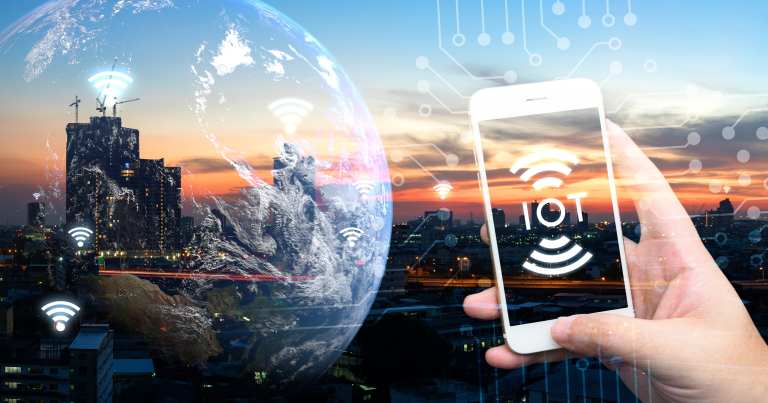Will The IoT Choose The Next World Superpower?

The Chinese and American governments are engaged in another proxy war. Nothing new there. But for all the saber rattling, this time it’s not about battleships and fighter planes.
What we’ve got now is a tech war over super high-speed data networks, more specifically, whose will dominate a web-connected planet. Chinese firm Huawei Technologies is seen as being in the lead at present, as technologists in the West slog through issues around standards. Setting standards — and getting there first with infrastructure — will help determine winners in a new world order that will come into being during this decade, as we start inhabiting a 5G world.
In the February edition of the PYMNTS Intelligence of Things Tracker® (which includes a comprehensive directory IoT providers), the global opportunity for IoT is analyzed in detail, with particular attention to increasing investment and growing interest in “smart cities” projects around the nation and around the world, and the 5G throughput they will rely on.
Smart Cities and 5G Threats
Like other things that sound far-off and vaguely sci-fi on first hearing, the IoT is materializing quickly — some might say “urgently” — as two rival global superpowers rush to control a central 5G network that unites every IoT device in the world. The Federal Communications Commission (FCC) continued to auction 5G bandwidth in December of 2019, with FCC Chairman Ajit Pai stating, “Pushing more spectrum into the commercial marketplace is a key component of our 5G FAST plan to advance American leadership in the next generation of wireless connectivity.”
The latest Intelligence of Things Tracker® looks at what’s possible in 5G smart cities, with companies including Cisco getting ahead of 5G-speed cybercrime that’s sure to come along with fast new networks. “You really need an application to connect [IoT platforms] — that network is critical,” Vikas Butaney, vice president of product management for technology and software solutions provider Cisco, told PYMNTS. “We provide that network in the middle … [but] you need comprehensive IoT security architecture in any of those critical IoT environments.”
Security will need a top-down inspection as 5G becomes ubiquitous. In its newsletter on technology threats, the FBI has warned that laptops and other devices storing sensitive data should be kept on separate networks from IoT devices, as the hacking threat is of concern.
It’s hardly all doom-and-gloom in the world of 5G, however, as autonomous vehicles that can order food and pay for it (among other neat tricks) are coming to a street near you soon. This will radically change driving as we’ve known it these past 100 years or so, from ridesharing to cargo transport to going to Grandma’s for holiday dinner. California-based robotics firm Nuro has been the first to get permission from the Feds to test self-driving cars … so buckle up.
Brave New World of 5G
From smarter smartphones to smarter homes, 5G networks are the true beginning of the “world of the future” style of ultra-connected living where simple voice commands will replace keystrokes and buttons. It’s a technology with the power to transform the way we live.
Along with that come the same security and fraud concerns that attended the 4G/LTE world. New cyberthreats like ominous “shadow devices” — these are almost anything connected to the IoT (TVs, laptops) that can be remotely taken over and used to eavesdrop and spy. It’s a brave new world alright. Check out the Intelligence of Things Tracker® for full details.